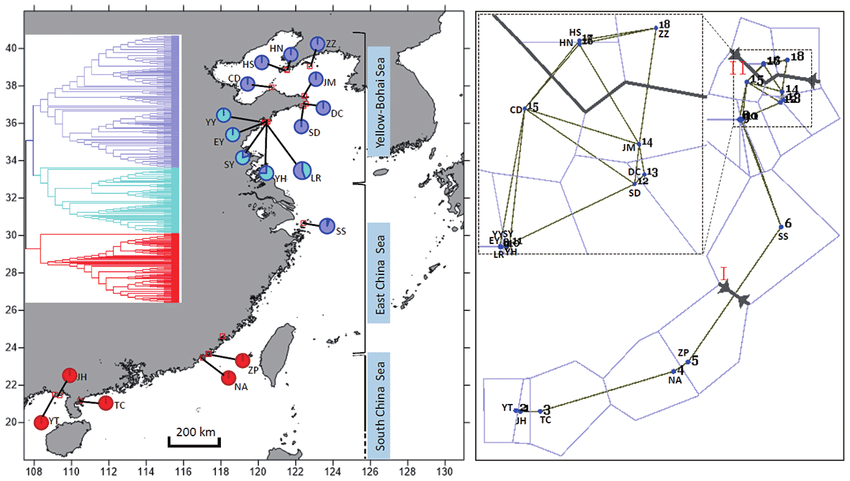A unique genetic lineage at the southern coast of China in the agar-producing Gracilaria vermiculophylla (Gracilariales, Florideophyceae)
Ocean warming can have significant negative impacts on population genetic diversity, local endemism and geographical distribution of a wide range of marine organisms. Thus, the identification of conservation units with high risk of extinction becomes an imperative task to assess, monitor, and manage marine biodiversity for policy-makers. Here, we surveyed population structure and genetic variation of the red seaweed Gracilaria vermiculophylla along the coast of China using genome-based amplified fragment length polymorphism (AFLP) scanning. Regardless of analysis methods used, AFLP consistently revealed a south to north genetic isolation. Populations at the southern coast of China showed unique genetic variation and much greater allelic richness, heterozygosity, and average genetic diversity than the northern. In particular, we identified a geographical barrier that may hinder genetic exchange between the two lineages. Consequently, the characterized genetic lineage at the southern coast of China likely resulted from the interplay of post-glacial persistence of ancestral diversity, geographical isolation and local adaptation. In particular, the southern populations are indispensable components to explore evolutionary genetics and historical biogeography of G. vermiculophylla in the northwestern Pacific, and the unique diversity also has important conservation value in terms of projected climate warming.




